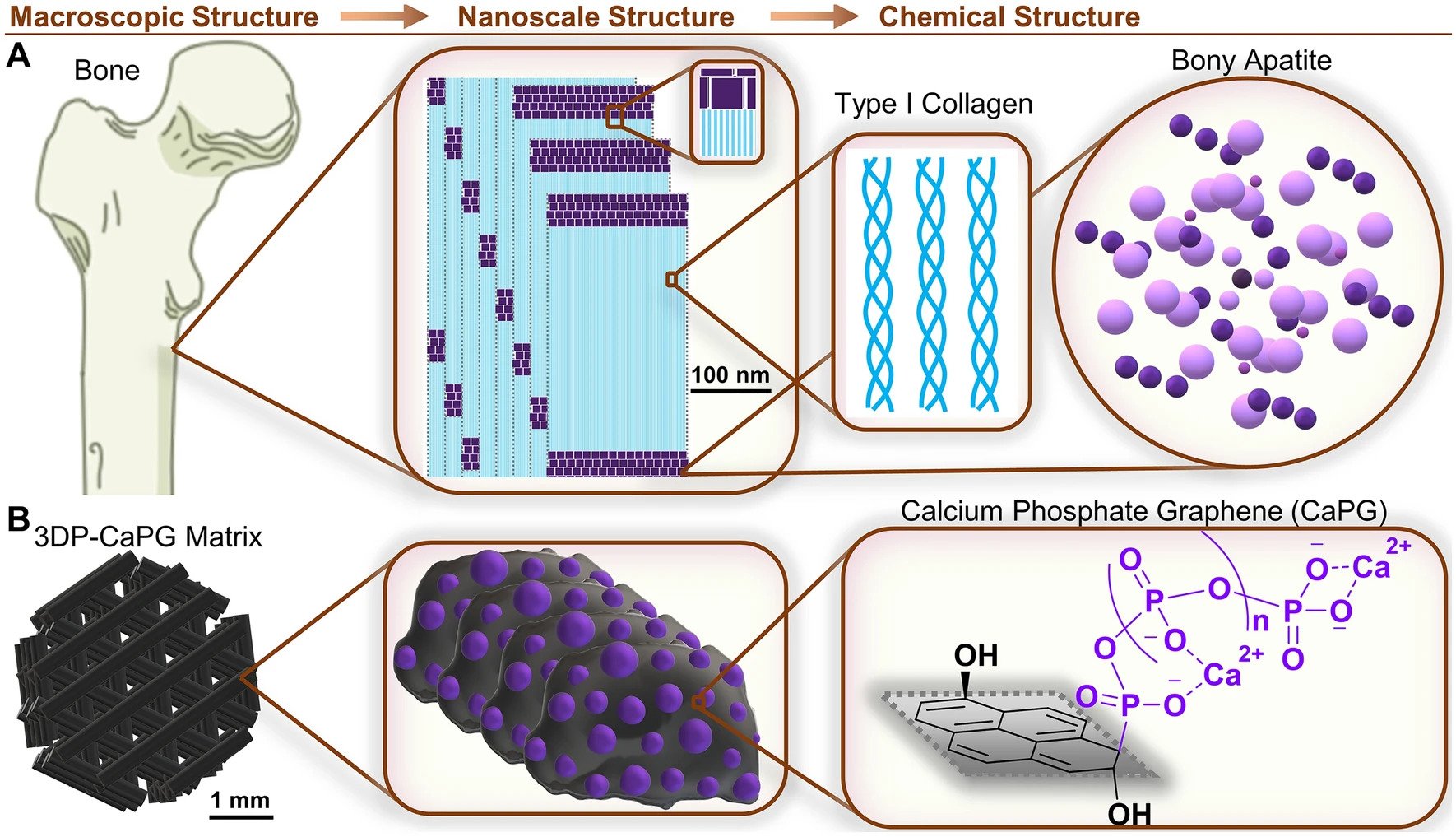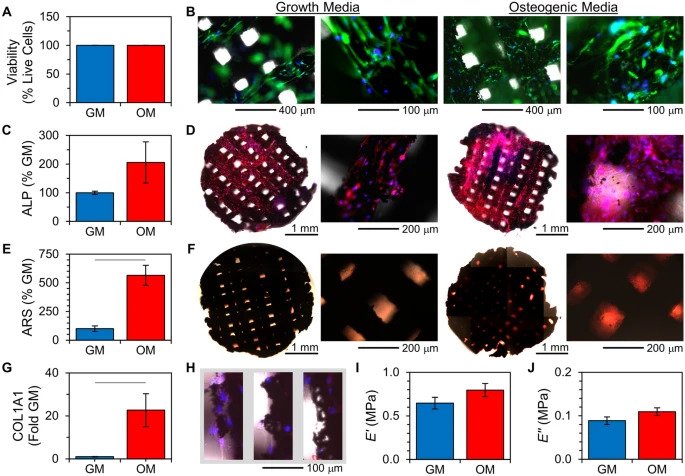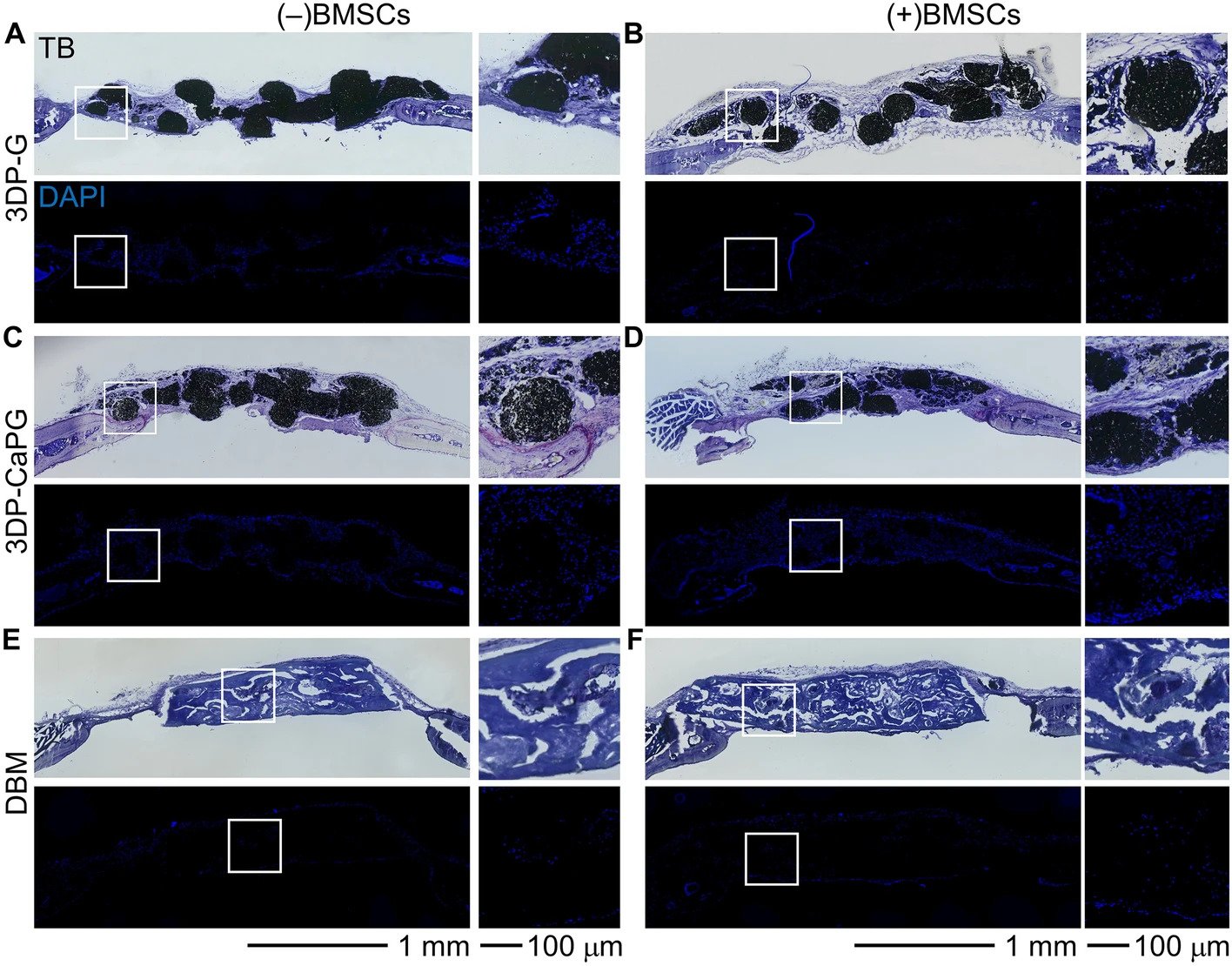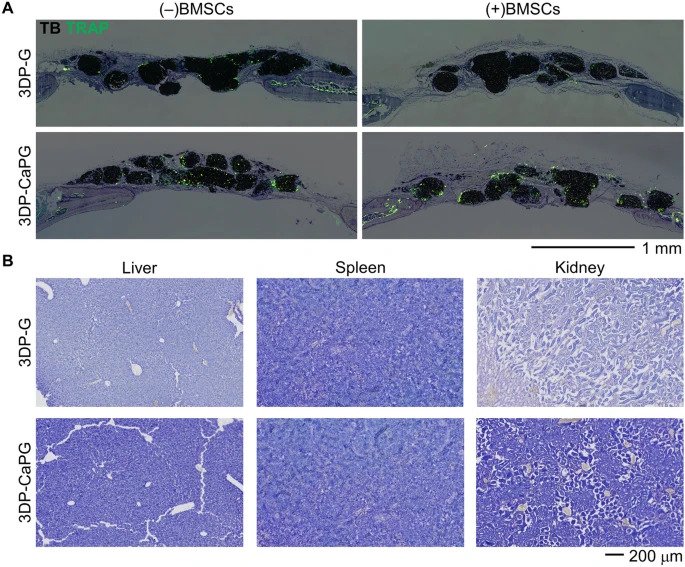May 8, 2022, used by Carnegie Mellon University (CMU) and the University of Connecticut (UConn)3D printingtechnology to develop new calcium phosphate graphene (CaPG) materials, which can be used for bone regeneration applications in the future.
The research team sought to develop an alternative to traditional autologous bone grafting that could treat bone defects and injuries simply and quickly.It is a kind of tissue regeneration suitable for defective sites3D printing
biology
alternative material, which has many
medical
Applicability, such as osteoinductivity, biosafety, long shelf life and reasonable price, etc.

3D printing and the development of graphene
Graphene is inherent in nature, it has lightweight properties, electrical and thermal conductivity, and extremely high mechanical strength, it has become a biological
medicine
,
energy
Ideal material for applications in production and microelectronics.
The difficulty in obtaining graphene materials is to peel off the single-layer structure. Graphene is graphite when layered layer by layer. Graphite with a thickness of 1 mm contains about 3 million layers of graphene. A pencil scratches lightly on the paper, and the traces left may be several layers or even just one layer of graphene. So this also presents a major challenge for 3D printing.
Nevertheless, with the development of 3D printing, people continue to develop the combination of 3D printing and graphene materials. For example, Virginia Tech and Lawrence Livermore National Laboratory (LLNL) have developed a high-resolution 3D printing method that disperses graphene in gels to form 3D printable resins, which have also partnered with California University Cruz collaboration to produce graphene aerogels for energy storage devices and more.

3D printing CaPG functional graphene materials
Graphene has been incorporated into additive manufacturing processes to enhance the osteogenic properties of the resulting matrix for bone regeneration. However, unfunctionalized graphene materials lack osteoinductive properties, and most matrices have not been studied in vivo.
In the past, people have been exploring how to create a synthetic matrix that has excellent osteoinductive properties while being biosafe, long shelf-life and cost-effective to produce. Among them, graphene-containing materials have received extensive attention due to their excellent chemical, mechanical, and biological properties.
Graphene-containing materials can promote cell adhesion and growth, and some evidence suggests they have osteogenic potential, so these materials are increasingly being used for bone regeneration engineering. However, graphene oxide alone lacks the ability to initiate natural bone regeneration at the site of injury. In addition, the team observed that, while graphene oxide flakes have excellent mechanical properties, its bulk structure lacks the mechanical properties that provide stable regenerating bone.
Therefore, they succeeded in creating a functionalized modified graphene, called phosphate graphene, with good potential for bone regeneration. A CaPG material that mimics bone was 3D printed by adding calcium (calcium can promote the differentiation of stem cells into bone cells).

Advances in bone regeneration technology
The team used the direct ink writing (DIW) 3D printing method of biofabrication company Dimension Inx to create the CaPG material with a porous structure, in which the graphite content of the ink is “very high” (about 90%). This enables cells to gain access to the osteoconductive backbone and controls the release of calcium and phosphate ions, meaning that the host response to the matrix relies primarily on the graphene content rather than the biologically inert binder.
The team can easily print conformation matrices with specific geometries for use in cell and animal studies. The team noted that it is also possible to print directly to match a specific bone defect. Therefore, 3D printing can be perfectly combined with CaPG materials, providing a customizable new technology for bone regeneration engineering.

For in vivo experiments, CaPG binds to bone marrow stromal cells (BMSCs) to promote bone formation in the subcutaneous space in mice. The CaPG matrix was found to be able to resorb and biodegrade in vivo, which the team says is rare for synthetic materials and shows promise as a resorbable osteoinductive matrix.
In addition, the team observed no deleterious effects on vital organs during the study period. Going forward, the researchers will conduct further developments to enhance the mechanical properties of the 3D printed CaPG matrix and test its long-term safety in vivo.
(responsible editor: admin)


0 Comments for “Carnegie Mellon University uses 3D printing technology to develop calcium phosphate graphene materials for bone regeneration”